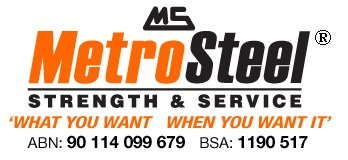 Steel manufacturing methods have evolved dramatically since the processes of the industrial revolution began in the mid 19th century. However modern methods are still based on the Bessemer process which was practised over 150 years ago. This was a way to introduce oxygen into molten iron in order to reduce the amount of carbon contained within.
Steel manufacturing methods have evolved dramatically since the processes of the industrial revolution began in the mid 19th century. However modern methods are still based on the Bessemer process which was practised over 150 years ago. This was a way to introduce oxygen into molten iron in order to reduce the amount of carbon contained within.
Modern-day steel production makes use of both traditional raw materials (iron) and recycled materials to turn them into steel. With this in mind, here are the 6 steps to modern steel production explained.
Step 1 – The iron making process
As iron is the main component of steel it firstly needs to be made. Iron ore, lime, and coke are placed into a blast furnace and melted. The resulting liquid known as molten iron is then formed. As molten iron still contains around 4% – 4.5% impurities such as carbon which in turn make the metal brittle, they need to be eradicated. Step 2 does exactly this.
Step 2 – Primary steel making
There are two main methods for making steel and these are Basic Oxygen Steel making (BOS) and Electric Ark Furnaces (EAF). BOS methods for example involve adding scrap (recycled) steel to the molten iron when in the furnace. Oxygen is then forced through the liquid (the Bessemer process) to cut the impurities in the molten metal down to 0.5% -1.5%.
Alternatively with the EAF method, recycled steel is fed into an electrical ark furnace along with the molten iron which is then heated to around 1650 degrees Celsius in order to convert it into high-grade steel.
Step 3 – Secondary steel making
Next the newly formed molten steel needs to be adjusted to make the perfect steel composition. This is done by either manipulating the temperature and/or removing certain elements. This may include processes such as degassing, stirring, ladle injection, or argon bubbling
Step 4 – casting
Now we have the bones of our steel the next step is to pour it into cooled moulds. This causes the the metal to cool quickly. Once cooled the metal is then cut into desired lengths depending upon the application eg, slabs for plates, blooms for sections such as beams, and billets for longer products such as wiring or thin pipes.
Step 5 – First forming
Also known as primary forming, the initial shapes of slabs, blooms, and billets are formed into their various shapes usually by hot rolling. Products that are hot rolled are then divided into flat products, long products, seamless tubes, and speciality products for one last stage of processing.
Step 6 – The manufacturing, fabrication and finishing process
Finally a variety of secondary forming techniques including shaping, machining, jointing and coating give the products their tell-tale shapes and properties.
So there you have it, the entire steel making process in 6 steps! If you’re in need of a particular metal part then why not contact Metro Steel. We have the skills and the experience to construct just about anything you want. Contact us on 07 3204 1000 for a competitive quote. Alternatively if you’re in the Deception Bay area of Brisbane, why not pop into our Kabi Circuit premises and talk to us first hand.
 Talk to an Expert (07) 3204 1000
Talk to an Expert (07) 3204 1000 Working Hours - Mon – Fri 7:00 AM – 4:00 PM
Working Hours - Mon – Fri 7:00 AM – 4:00 PM